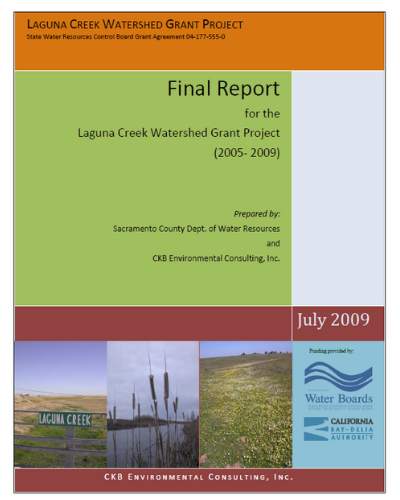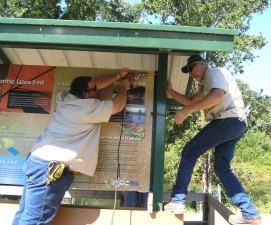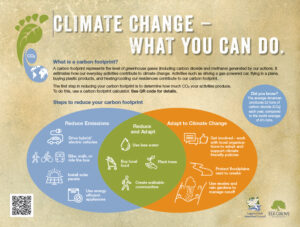In December of 2008, the Sacramento River Watershed Program (SRWP) awarded the Laguna Creek Watershed Council its Award for Watershed Excellence. Founded in 1996, the SRWP is a large watershed organization that particularly focuses on the health of the Sacramento River. The organization works with dozens of watershed councils that are stewards for the tributaries of the Sacramento River.
Bob Shanks, a member of their Board of Directors, came to our spring membership meeting to officially present this award to Carmel Brown, consultant and manager of the grant that helped form the LCWC, and Greg Suba, former watershed coordinator who currently works with the California Native Plant Society. We are honored to be the recipient of this award.



















 The Laguna Creek Watershed Council has partnered with the Cosumnes Community Services District, the City of Elk Grove, developer groups, and a local graphic artist to produce several streamside trail signs along both Laguna and Elk Grove Creeks.
The Laguna Creek Watershed Council has partnered with the Cosumnes Community Services District, the City of Elk Grove, developer groups, and a local graphic artist to produce several streamside trail signs along both Laguna and Elk Grove Creeks.








